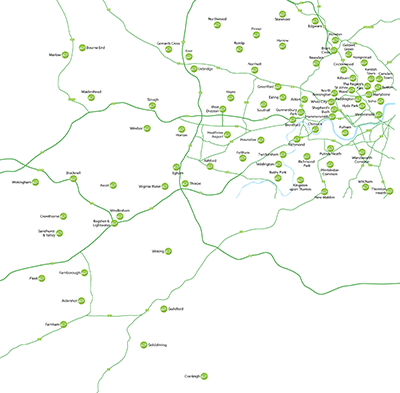Rodent, Rat & Mice Pest Control in West London
EXPERTS IN RODENT PROOFING
Rats and mice, so they say, are everywhere. There are all kinds of predictions on the rat population with age-old sayings such as ‘you are never more than 10 feet from a rat’ etc. However, the truth is, we simply don’t know how big a rat or mice population the UK has in the wild; some figures suggest hundreds of thousands, but other estimates say the population of both these rodents is far less.
None of this is any comfort or use, if you have rat in the garden/shed/outbuildings etc. or mice for that matter.



Hate them or love them, having rodents sharing your property with you presents 3 significant hazards:
- Disease
Rodents – rats and mice – are known to carry disease that can be passed to humans. Some species of rodent carry Hantavirus, a disease that is inhaled by the human when dealing with infected droppings etc. of mice and rats. Its appearance in the UK was noted in late 2012, on rats that had travelled here on ships from Asia. It is NOT widespread in the UK, but it existence is a concern.
Salmonella, commonly associated with undercooked or contaminated chicken is spread by rodents. Likewise the bubonic plague can be spread to humans by fleas that have sucked the blood of an infected rodent. Appearing in small batches across the world, it is a consideration when dealing with rodent infestations.
Weils’ Disease can also be caught from water where rats are known to frequent, and defecate in.
All of these diseases can make us humans incredibly ill, in some cases, if the infection is severe, they can be fatal in someone with pre-existing medical conditions.
- Damage
Rodents cause a huge amount of damage. They not only find a suitable home for themselves that is warm and safe, but also a place where there is a plentiful food supply. However, they cause a huge amount of damage as they strip and chew all kinds of materials in order to create their nests.
This material can be anything from cardboard, fabrics and clothing stored in bags etc. as well as wood and other types of materials that can be chewed and shredded. In many cases, customers have found this damage after the rats and mice have done a phenomenal amount of expensive damage!
- Numbers prolific breeders
The problem with any rodent infestation is that it rarely goes away on its own and this is due, in part, to the fact that rats and mice are prolific breeders.
They breed quickly, with a short gestation period and large litters. The young also reach sexual maturity within a matter of weeks, hence they are ready to breed relatively quickly. The results is, of course, ever expanding numbers of rodents.
Do you have rats or mice?
In some cases, it is not always easy to tell if you have rats or mice; some people know they have a brown mouse in the cellar for example, and are quite happy to tolerate its presence as it encroaches no further, causes no damage and is not a room or space that is commonly used.
In other situations, however, dealing with the issue becomes a priority and there are some ways of being able to identify if you have a rodent ‘problem’;



- Holes – the appearance of holes in the corner of buildings or sheds can be a sign that there are rodents entering your building. Mice need a tiny hole, no bigger than they head to gain access and rats need a hole no bigger than 80mm in diameter. Inside the property, you may also notice holes that lead into a wall cavity, another favourite place for rodents to make their nests.
- Runs & smears – rodents are creatures of habit; they rarely run across open space, preferring to ‘skirt around the edges or boundary’. They will frequently leave their nests and so finding pathways to and from their point of entry and exit is one way of telling if you have rats or mice, especially in outside spaces. Inside, you may not only find droppings but also smear marks, where the rodents are running back and forth.
- Droppings – however, the biggest giveaway are the droppings that rodents inevitably leave behind. As they are constantly gnawing and eating, they are constantly defecating. Finding small droppings, up to 20mm in length suggests a rat; mice droppings are incredibly small, much like a grain of rice but again, dark in colour.
- Damage – we have already discussed the damage that they cause as rats and mice shred all kinds of materials for nesting materials!
Solving the problem
Quick and humane way is to call in a professional pest controller who will…
- Quickly assess the scale of the infestation
- Create a comprehensive plan on how to deal with the issue; with all the correct protective equipment and humane methods, a professional pest control can deal quickly with a rodent infestation
- Discuss the options with you, decide on the best course of action and proceed
- Assess the option for preventing problems in the future e.g. advice on habits and routines and physical adaptations, sealing holes and other issues spotted








 for W areas
for W areas






